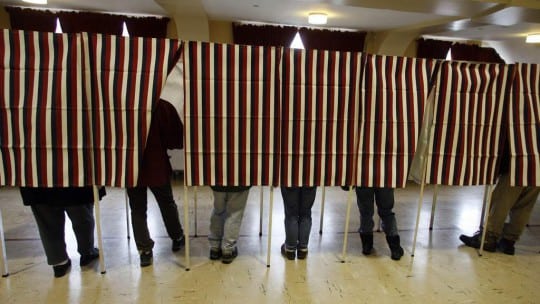
The 2016 presidential election has been nothing short of a spectacle, turning traditional political conventions (no pun intended) squarely on their head. And just as this election has forced the political establishment to alter its strategies, business organizations must reevaluate how to approach the unpredictable and unforgiving crises they face in today’s new media landscape.
Presidential politics is perhaps the ultimate model of a constant, high-stakes crisis and thus serves as an excellent case study. Candidates are scrutinized every second of every day, much the same way organizations are scrutinized during a crisis. The mainstream media, bloggers, and even citizen journalists write thousands of stories an hour, which are then shared across social media, proliferating so rapidly that it is nearly impossible to get ahead of bad news, or more frustratingly, misinformation.

By adopting tools and techniques common on the campaign trail, organizations stand a greater chance of ensuring their teams are ready when a crisis strikes.
Polling
While the basics of polling are a science, the heart of polling is really more of an art form. It can be a highly effective tool for organizations to inform strategy, guide messaging, and validate—or disprove—a team’s premonitions. If conducted the right way during a crisis, when clarity is in short supply, a poll can act as a barometer to measure reality.
When a crisis might be brewing—or an organization senses the proverbial “smoke”—polling can gauge public sentiment to determine whether there is indeed a “fire.” Is it really a looming threat, or is it less consequential than initially perceived? For example, your industry is facing tremendous backlash over labor violations. While your organization hasn’t come under fire directly, many of your competitors have. You fear it’s only a matter of time before you’re caught in the crosshairs. A highly targeted poll, crafted with help from an experienced pollster, can help determine if the public views your company in the same light as the other violators and how you can best prepare for the impending attacks.
“When something explodes on Twitter, people panic and are convinced there is a huge problem. But sometimes it’s just a vocal, very small minority,” says veteran pollster Regina Corso, former director of the Harris Poll and owner of Regina Corso Consulting. “Within a few days, a quick survey can be done to see if that small group has managed to influence others and provide real data to craft your response—or help you decide a response isn’t even necessary.”
During an actual crisis, polls can answer questions like: Is your message resonating? What does the public want to hear? Is your spokesperson connecting? Are you winning detractors or losing your supporters? Polls are ultimately listening devices that can be deployed quickly with impressive precision and stealth. Organizations should get in the habit of utilizing polls as a regular, routine communications tactic. By doing so proactively, they can address concerning findings and anticipate potential hot spots before a fire ignites.
The War Room
Staffers on the campaign trail face a never-ending onslaught of news and attacks that require constant triage. They usually operate out of a war room, a central location where they stay apprised of what’s happening, keep a pulse on fellow candidates, and respond in real time. A single news trigger can seemingly incite a DEFCON situation and then subside within a few hours. Or what appears to be an innocuous stumble can deal a death blow to a candidate almost instantaneously.
For most organizations, a war room likely won’t be as dramatic as a campaign war room, but during a crisis, it is an essential apparatus, acting as the nerve center of activities and helping coordinate a united effort. Knowing precisely what’s being said about one’s organization across every corner of the Internet, not to mention in print publications and broadcast media, is critical. Once an attack story, a trending groundswell of negative social media conversations, or a factual inaccuracy is identified, the crisis team—a predetermined and well-trained group focused on the crisis at hand—can work to craft a response. Even if the team simply takes over a conference room, physically consolidating personnel allows for more collaboration, faster approval, and controlled messaging. It may ruffle some feathers among those who are accustomed to private offices, but during a crisis, time is of the essence.
Services like Zignal Labs offer real-time monitoring in a single, easy-to-use platform. The flipside, of course, is that while these technologies give their users a leg up, competitors have the same access. So, it’s safe to assume your opposition is savvy and has invested in such services, meaning you must, too.
“In this day and age, news happens at breakneck speed. Attacks are no longer confined to a front-page story in the New York Times, which means organizations need technology to help keep up with the countless outlets and forums where these attacks arise,” explains Tim Hayden, vice president of marketing for Zignal Labs. “Using tools to visualize and monitor what’s being said about your organization—and your competitors—a team can spot trends and anticipate potential crises, getting ahead of a bad story and quashing misinformation.”
Organizations might not need a full-fledged physical war room during normal operations, but institutionalizing high-level monitoring—and sharing any and all potential hot spots with the chain of command—should be championed from the top. Develop a process that works for your organization, fine tune what to track, and invest the time and resources to train your team. Having an operation in place with pre-assigned roles, not to mention rehearsing using tabletop simulations, will only make things easier during a real crisis.
Managing the Message
Politicians are notorious for repeating the same sound bites, often evading questions and appearing robotic in their delivery. Improvisation and the ability to convey compassion and connect is vital during a crisis—just ask former BP CEO Tony Hayward. But having clear, concise, and consistent anchor messages guiding all communications is of paramount importance. Candidates can sound like broken records when they repeat the same phrase or idea multiple times. Yet, these confident affirmations help crystalize their message and create a memorable association.
Campaigns employ surrogates and spokespeople all over the country, making it difficult to control messages. Similarly, organizations not only have a key spokesperson or spokespeople but also employees, vendors, clients, and affiliates speaking on their behalf during a crisis, even if not in an official capacity or inadvertently. These individuals are far more likely to go off script if they aren’t equipped with approved messages and properly briefed.
Candidates always seem to meet their demise when they offer misleading facts or make untrue claims, which can be quickly disputed and cast the candidates’ credibility and trustworthiness into question. Organizations must use cold hard facts to bolster their messages and continuously work to brief media, allies, and other constituents in fact-based discussions whenever they can.
An organization’s crisis team must refresh and revisit messages often, using polling and monitoring to determine what’s working and what’s not. During an active crisis, up-to-date messaging material should be distributed internally as new information becomes available. Having a well-developed working document that contains frequently asked questions and answers is another essential tool that helps prepare official spokespeople and even employees, who should be prepared just the same, even if it’s simply to answer questions at the dinner table.
Endorsements
The 2016 presidential campaign has demonstrated that endorsements don’t seem to make much of a difference. Nate Silver’s FiveThirtyEight blog tracks how endorsements correspond to how well candidates are performing (hint: there’s very little correlation). But the fundamental principle behind endorsements—getting public support and validation from credible and respected groups and individuals—lends well to any crisis. In heavily African-American districts, candidates cozy up to civil rights leaders. In union-heavy states, candidates pose for ample photo ops at local manufacturing plants.
Organizations are wise to rally these third-party allies, whether a subject matter expert during an environmental spill, a former government regulator in the midst of a food recall, or a community leader after a workplace fatality. Of course, take the time to properly research and vet them. Discovering someone has unsavory elements in his or her past, or has served as a “hired gun” for other organizations in the past, can make your crisis even worse.
One more word of caution: It’s easy for allies to appear bought and sold. Organizations should work to cultivate real relationships with allies that didn’t just transpire out of convenience or mutual benefit. Nurture relationships with allies, as well as those with the media and other stakeholders, by educating them about your mission and ethos, developing a meaningful rapport, and building trust and respect.
During a crisis, consider these allies your character witnesses who can attest to your good works. If a crisis does strike, they can pen op-eds or blog posts, issue public statements, participate in press conferences, or simply work behind the scenes.
In conclusion, much like presidential campaigns have changed, so has the nature of crises facing organizations. As we witness the 2016 presidential election unfold in the coming months, take a close look at what’s happening and analyze how candidates handle the crises they face. How are they responding to attacks? What tactics do they use? How do they achieve success communicating in a crisis? How do their failures take form? By reflecting on the candidates’ triumphs and blunders, as well as the tools and techniques common on the campaign trail, business communicators can prepare their own organizations for crisis management success.
Caitlin Rourk is the principal of Dynamis Strategies, a litigation and crisis PR firm based in Austin, TX, and serving clients nationwide.
